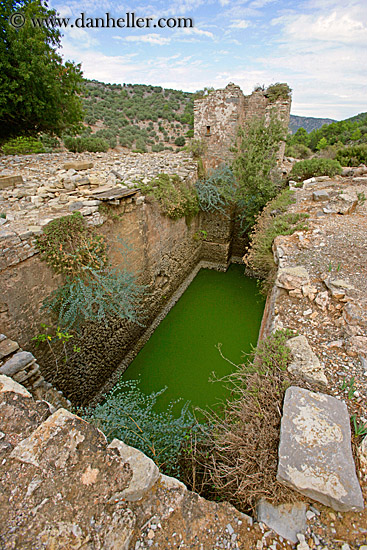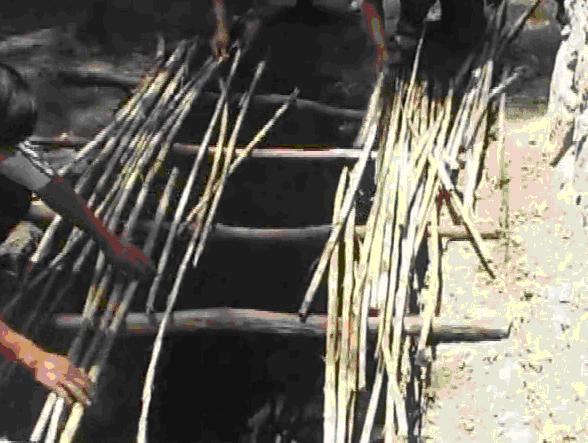Horizontal cistern

The horizontal cistern is a variation of the regular EMAS vertical design, more suitable for ground where it is not possible to dig deep.
EMAS Cisterns are underground tanks coated with a thin layer of cement mortar and made waterproof with a pure cement whitewash. It is common for 2-3 cisterns to be constructed per household, particularly when rainwater is the main water source, for a total of 4000-8000 litres of space. An EMAS pump can be installed as well to pump water to local faucets in the house.
The cistern can also be used as a reserve water supply, where the water supply from wells is irregular or only available during the rainy season. This is also useful if the regular water supply is suitable for washing, etc. but too salty or polluted for drinking. It can also be used to store treated sewage water until it can be used for irrigation. It can further be used as a treatment tank for example for flocculation of turbid water.
EMAS is the acronym for Escuela Móvil de Agua y Saneamiento (Mobile School for Water and Sanitation), in Bolivia, whose director, Wolfgang Eloy Buchner, developed the EMAS pump in the 1990s. EMAS is not only the name of the mobile school for water and sanitation, but also a whole technical and social concept of water and sanitation which includes rain water harvesting, solar water heaters, windpower, hydraulic rams, water treatment, small tanks and sinks, a variety of hand and foot pumps, and ferrocement tanks. The aim of the technologies and systems is to achieve the necessary supply of drinkable water, and water for micro irrigation in rural and sub urban areas.
Contents
Suitable Conditions
The Horizontal cistern is suitable in areas with rocky ground, where it is not possible to dig deep enough for a vertical cistern.
| Advantages | Disadvantages |
|---|---|
| - A water truck can simply let water fall into the tank by gravity – no pump required - Water can be directly pumped into a household storage tank with an EMAS pump |
- More complicated to build than a vertical cistern - As with all open underground tanks, contamination (livestock, rainwater runoff carrying pesticides) is more probable |
Resilience to changes in the environment
Drought
Effects of drought: Badly made concrete and cracked linings (e.g. in tanks, dams, waterways, wells, and other structures).
Underlying causes of effects: Less water used for curing; Impure water used for mixing.
To increase resiliency of WASH system: Ensure adequate mixing, ratios, purity of ingredients; Minimize water content in mixture; Ensure adequate curing.
For more information on drought: Resilient WASH systems in drought-prone areas
Construction, operations and maintenance
It is operated in the same way as a vertical cistern.
The horizontal cistern is around 1m x 3m large, and can be up to 2.5m deep. It consists of two sections, one which is slightly deeper, and round, similar to the vertical cistern. This is done so there is room for a pump. The other is the vault, which is long, and less deep.
First a hole is dug for the cistern. It should be less deep in the area where the vault is, and deepen on one end, where the pump will be. Then the arch shaped cover for the vault is manufactured using sticks and mud as a mold. The cover is made of 2 layers of cement, with stones in between. The cement is left to dry for 4 days. The walls of the cistern are then built, with layers of mud and cement of different thicknesses. Then the walls, curbstone, cover and pump are installed in the other section, in a similar way to how it is done with the vertical cistern.
